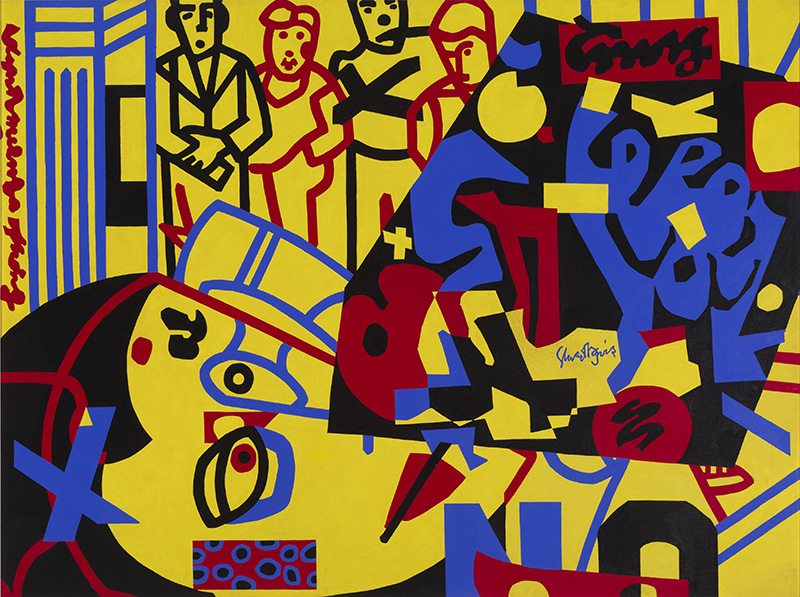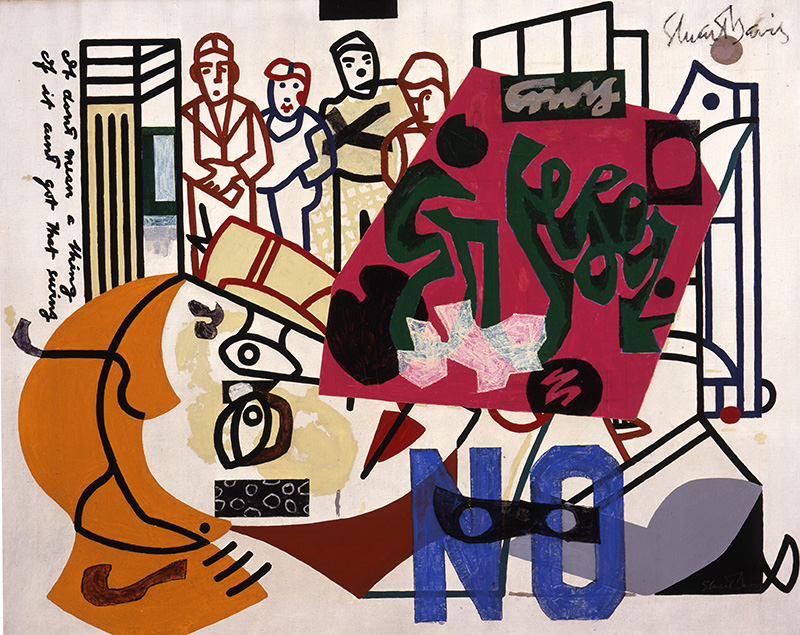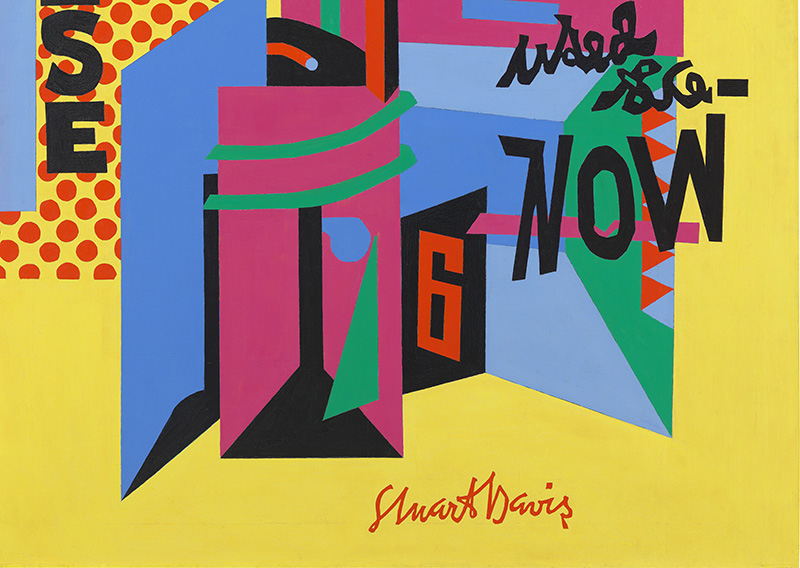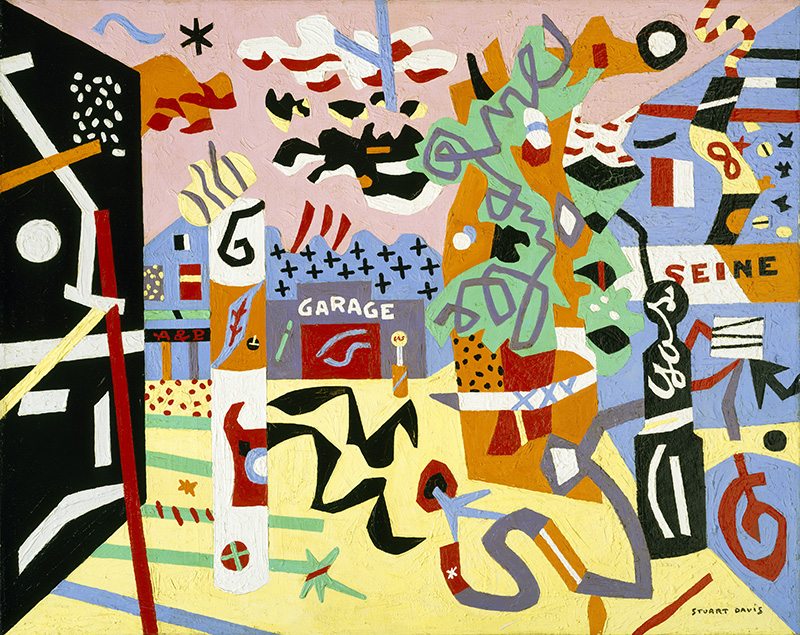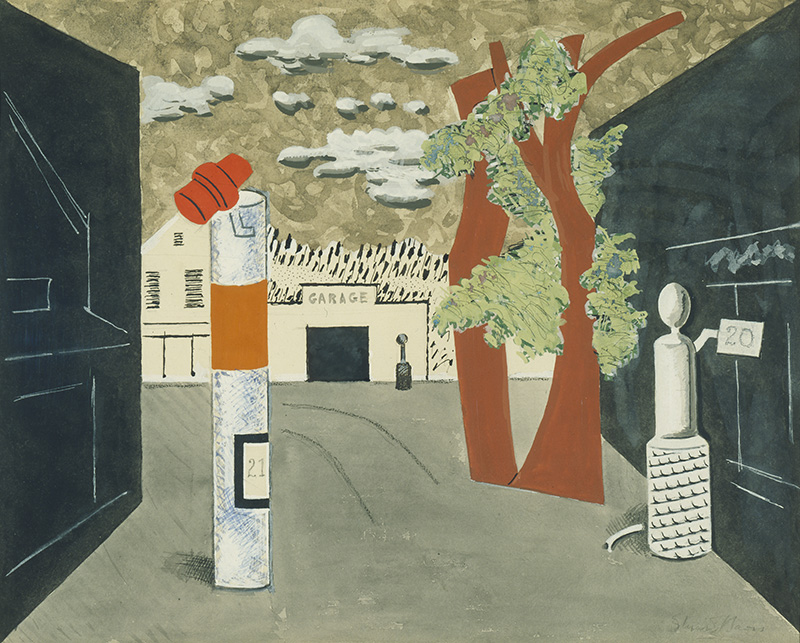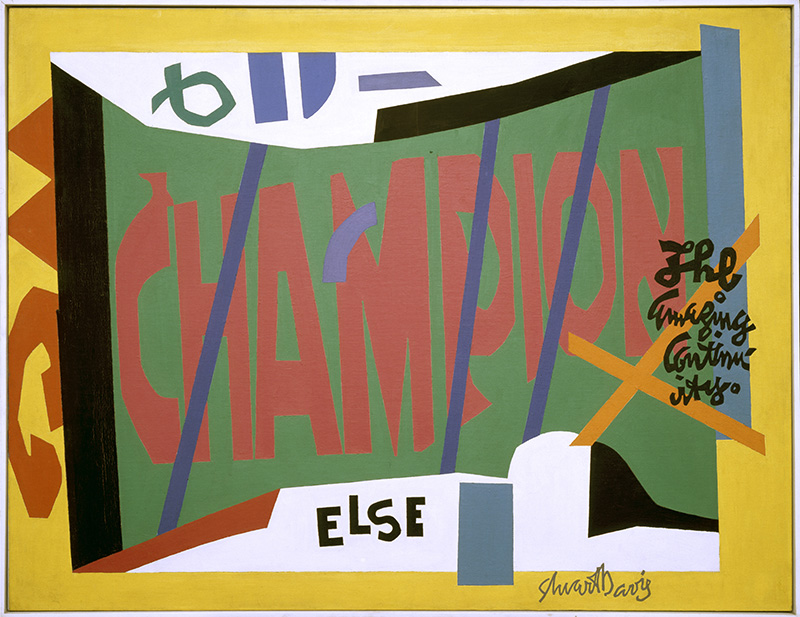ART CITIES:N.York-Stuart Davis
 Stuart Davis aesthetic values were shaped by his childhood exposure to the Realist Ashcan painters in his father’s circle, who captured the vitality and energy of urban life and later by his studies in N. York with the leader of the circle Robert Henri. Their belief that art should offer insight into everyday experience3s would be remain central to Davis. Seeing the Fauvist and Cubist works in the legendary 1913 Armory Show, lend him to question realism’s emphasis on subject matter over form and composition.
Stuart Davis aesthetic values were shaped by his childhood exposure to the Realist Ashcan painters in his father’s circle, who captured the vitality and energy of urban life and later by his studies in N. York with the leader of the circle Robert Henri. Their belief that art should offer insight into everyday experience3s would be remain central to Davis. Seeing the Fauvist and Cubist works in the legendary 1913 Armory Show, lend him to question realism’s emphasis on subject matter over form and composition.
By Efi Michalarou
Photo: Whitney Museum of American Art Archive
The exhibition “Stuart Davis: In Full Swing” features 100 artworks by an artist whose formal brilliance and complexity captured the energy of mass culture and modern life. The exhibition is unusual in its focus on Davis’s mature work, from his paintings of consumer products of the early ‘20s to the work left on his easel at his death in 1964, and in exploring Davis’s habit of using preexisting motifs as springboards for new compositions. The exhibition departs in significant ways from earlier presentations of the artist’s work. The exhibition omits Davis’s decade of apprenticeship to European modernism favor of the series of breakthroughs he made beginning in 1921 with his paintings of tobacco packages and household products, and continuing into his last two decades in which he employed abstract shapes, brilliant color, and words to evoke the ebullience of popular culture. In 1928 Davis stayed in Paris for 13 months, depicting the city’s streets with the same angled geometries he had used in his egg-beater still lifes, while softening the severity of those earlier paintings with a confectionary palette and whimsical calligraphy. Davis’s finances, which were always precarious, plummeted after the 1929 stock market crash. Between 1934 and 1940, he served as a leading member of the Unemployed Artists Group and the Artists’ Committee of Action, vice president of the Artists Union, editor of the left-wing journal Art Front, and vice president and ultimately president of the American Artists’ Congress. Davis’s aesthetic output during this period was primarily murals, an art form that enjoyed widespread popularity during the Great Depression thanks to the various government agencies. Davis pushed toward greater abstraction in the five murals he made in the ‘30s. By treating the space between objects as flat planes of vibrant color and overlapping the forms in his compositions so that they became fragmented shapes, he channeled the kaleidoscopic sensations of modern life into an animated equilibrium. Davis’s political activism ended abruptly on 4/4/40, when the American Artists’ Congress, the organization he had presided over since 1937, voted to support the Soviet Union’s invasion of Finland. In 1939, Davis began the practice of creating groups or “families” of related paintings, often based on the compositions of his own much earlier works. In 1950, he began incorporating words into his art as independent design elements. Doing so allowed him to infuse his paintings with the bold energy and ebullience of advertising and popular culture without resorting to illusionistic realism. In the late ‘50s, Davis’s work became even more expansive as he enlarged his shapes further and reduced his palette to three colors (red, green, and yellow) along with black and white. He continued to base the majority of his paintings on extant motifs, but now he occasionally selected a close-up or inverted section of an earlier image as his starting point.
Info: Curators: Barbara Haskell, Assistant Curator: Sarah Humphreville, Whitney Museum of American Art, 99 Gansevoort Street, New York, Duration: 10/6-24/9/16, Days & Hours: July-August: Mon-Thu & Sun 10:30-18:00, Fri-Sat 10:30-22:00, September-February: Mon, Wed-Thu & Sun 10:30-18:00, Fri-Sat 10:30-22:00, http://whitney.org
